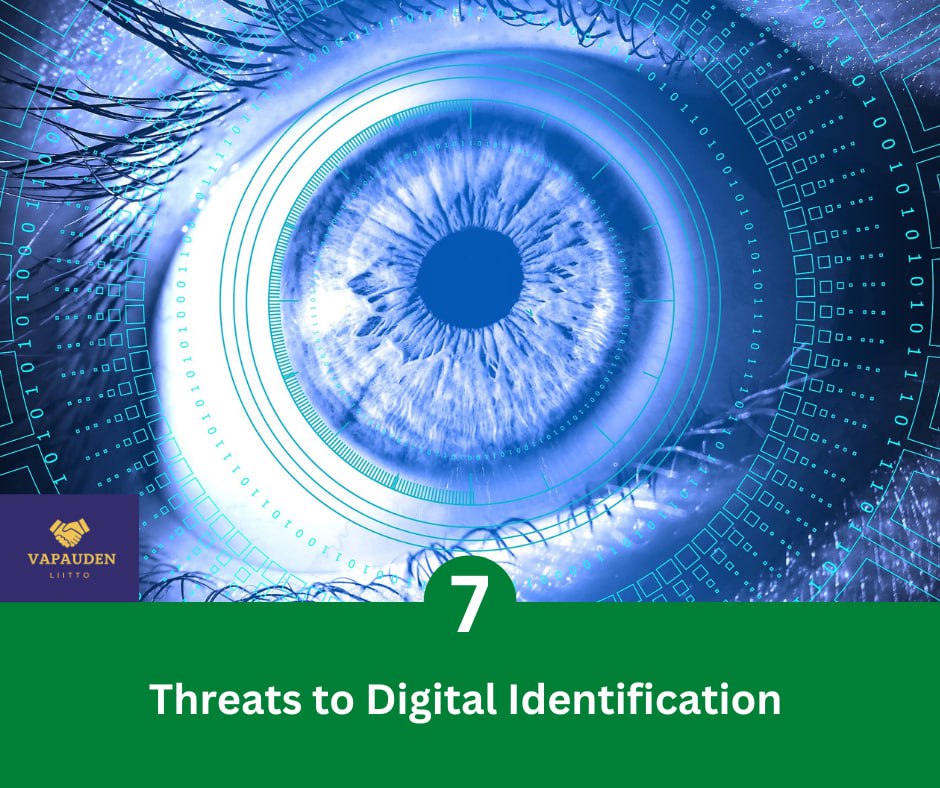
Welcome, dear visitor, and thank you for stopping by our website, Freedom Alliance Party, (Vapauden Liitto) and yes, we know there isn’t much information written in English, but of course, in case of an emergency, you can always use a translator. However, we felt so strongly about this particular issue and its importance that, for your convenience, we also wanted to offer it to you in English.
The great challenge is we are heading towards a digital dystopia, and in no uncertain terms, it is an attack against our freedom.
We are already being painted a picture that cell phones may disappear from the street scene by 2030 when the microchip installed in people makes them unnecessary. Numerous representatives of various organizations will also be displaced, and efforts are being made to replace them with robotic equivalents.
Do we really want to replace delightful human encounters with digital automatons?
We are repeatedly made to understand and fear that there is no alternative to this kind of development and that without a complete digital identification system our society could not function effectively. Not only is this not true at all, but the massive risks that digitization would bring with it are also typically left unmentioned.
Digital identification systems have the potential to significantly improve the convenience and efficiency of many processes, such as voting, banking, and accessing government services. However, these systems also raise significant security and privacy concerns.
Serious concern is the potential for identity fraud or theft. With digital identification, an attacker may steal or spoof an individual’s identity and use it for malicious purposes. For example, an attacker could exploit stolen identification information to open bank accounts, make fraudulent transactions, or apply for credit in another person’s name.
Digital identification systems have many potential security risks that must be considered. Some of the main concerns include the following:
- Authentication: Digital identification systems rely on various forms of authentication, such as passwords, fingerprints, or facial recognition, to verify a person’s identity. However, these methods can be easily bypassed if the system is not designed or implemented correctly or if the user’s credentials are stolen or compromised.
- Data breaches: Digital identification systems store personal information, such as names, addresses, and social security numbers, which can be valuable to hackers. If this information is not secured correctly, it can be stolen in a data breach. This could result in sensitive personal data falling into the wrong hands.
- Phishing and social engineering: Users of digital identification systems may be targeted by phishing attacks or other forms of social engineering, in which attackers trick them into disclosing their credentials or personal information.
- Privacy concerns: Digital identification systems can raise privacy concerns, as they may be used to track a person’s movements, activities, and personal relationships.
- Centralized databases: centralizing data of many individuals with their personal identification details creates a single attack point for hackers and bad actors.
- Legal and regulatory compliance: Organizations that use digital identification systems must also comply with various legal and regulatory requirements, such as data protection laws and regulations.
- Identity theft: digital identities are another target for identity thieves who may use their identity to impersonate and access sensitive information.
Overall, the security of a digital identification system depends on several factors, including the design and implementation of the system, the security controls in place, and the ability to detect and respond to security breaches.
In digital identification systems, third parties, like companies or governments, may have access to large amounts of personal data. There’s a risk that this data could be used for profiling, surveillance, or other nefarious purposes.
Given the sensitive nature of digital identification systems and the potential consequences of security breaches, it’s vital to ensure that these systems are designed and implemented with robust security measures to protect against these and other potential risks.
However, let’s assume that everything goes as it should: do we want to create a world that, even in theory, allows the formation of a control society like China?
If you want to continue doing business with smiling people rather than scanning machines, then there is still a chance to influence what our future looks like.
By using cash and securing its availability by law for years to come, we can do our part to ensure that personal control remains with the person – not the state.
Harri Kullberg
Parliamentary Candidate






